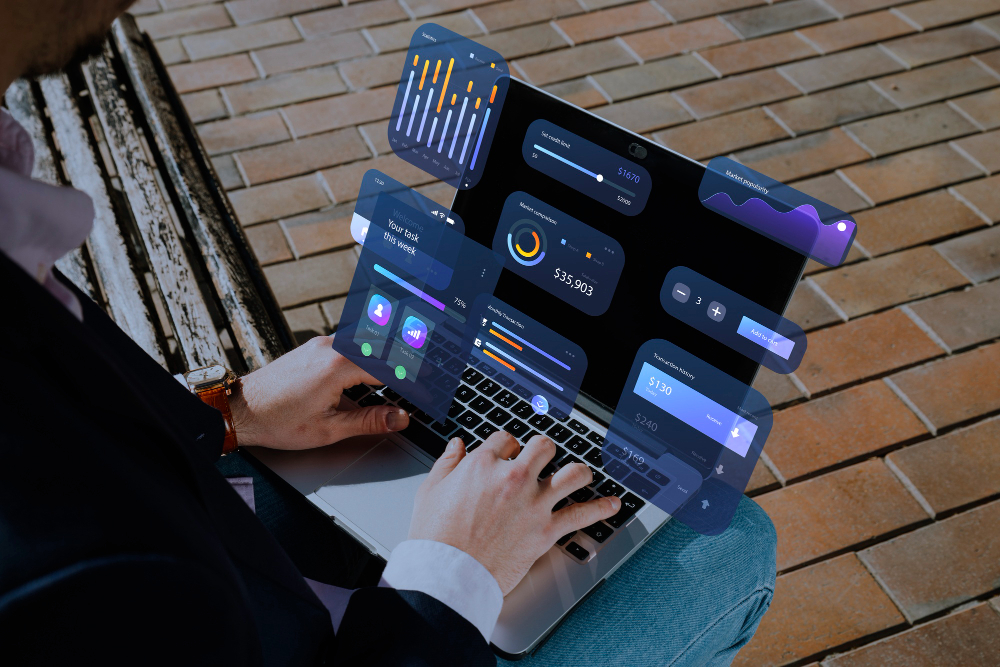Real-World Asset Tokenization: The Next Big Trend in Finance
Have you heard of the concept of asset tokenization? It’s a modern idea that could transform your investments—here’s what you need to know.
How Real-World Asset Tokenization Is Changing Your Life
In the United States, where financial innovation often takes shape before spreading globally, a new trend is gaining momentum: real-world asset (RWA) tokenization.

So what’s behind this new wave — and why is it being called “the next big trend in finance”?
What Is Real-World Asset Tokenization?
Tokenization refers to the transformation of ownership rights of a tangible asset into a digital representation stored on a blockchain.
In simple terms, it’s like turning a house, a luxury car, or a batch of company shares into digital fractions that can be easily bought, sold, or transferred online.
In the U.S., this model has attracted attention from both startups and financial giants because it allows for more democratic access to investment opportunities that were once exclusive to high-net-worth individuals or institutions.
Imagine a commercial building in New York valued at $20 million. Instead of selling it to a single buyer or an institutional fund, the owner could tokenize the asset and divide it into thousands of tokens worth $100 each.
This makes it possible for everyday investors to own a slice of the building and share in the profits and appreciation.
The Advantages of Tokenizing Assets
Tokenizing RWAs brings several key benefits to the U.S. financial market and investors alike:
- Easier access—High-value assets become affordable to a broader base of investors.
- Liquidity—Tokens can be traded in secondary markets, unlike traditional real estate or fine art.
- Transparency—Blockchain technology ensures all transactions are traceable and tamper-proof.
- Lower operational costs—Middlemen and cumbersome paperwork are reduced or eliminated.
- 24/7 trading—Blockchain-based markets don’t close; trading can happen at any time.
Real-Life Use Cases in the United States
Real-world asset tokenization is no longer theoretical — it’s already happening across the U.S.
- Real Estate: Platforms like RealT and Lofty allow users to purchase fractional ownership in residential and commercial properties, with rental income paid out in stablecoins such as USDC.
- Art Market: Masterworks is a major player, enabling investors to buy shares in masterpieces by artists like Banksy or Basquiat through tokenized ownership.
- Fixed Income: Companies like Ondo Finance and Maple Finance are developing tools to tokenize fixed-income instruments and make them accessible within decentralized finance (DeFi) ecosystems.
Traditional Institutions Are Paying Attention
Major U.S. banks and financial institutions are also moving quickly to embrace the trend.
JPMorgan, for example, has launched its own blockchain platform called Onyx, which already facilitates transactions involving tokenized assets among institutional clients.
This growing interest signals that tokenization is no longer just a crypto niche — it’s becoming a core component of the modernization of global financial infrastructure.
Regulatory Challenges and Technological Barriers
Despite the excitement, real-world asset tokenization still faces significant challenges in the U.S., particularly around regulation.
The Securities and Exchange Commission (SEC) and other regulatory agencies are still working on clear guidelines to determine how these asset tokens should be classified — whether as securities, commodities, or some new category altogether.
This lack of regulatory clarity is currently one of the main obstacles to large-scale adoption.
Additionally, legal and technological infrastructure must catch up. It’s crucial to ensure that holding a token represents a legally enforceable right to the underlying asset. That requires syncing digital records with traditional legal contracts — a process that’s still evolving.
Why 2025 Could Be a Turning Point
There are several reasons to believe that 2025 could be the breakthrough year for tokenized assets in the U.S.
Blockchain technologies are maturing, regulated platforms are expanding, and institutional investors are showing growing interest. The convergence of these forces is creating an ideal environment for tokenization to become a foundational pillar of modern finance.
Moreover, the emergence of ETFs backed by tokenized assets and the integration of tokens into mainstream digital wallets — especially those tied to regulated exchanges — will likely accelerate the adoption curve.
More than a passing trend, it represents a structural shift in how assets will be owned, traded, and accessed in the years to come.
If regulatory hurdles can be overcome and the legal-tech infrastructure continues to evolve, tokenization could pave the way for a fairer, more efficient, and more accessible financial market.





